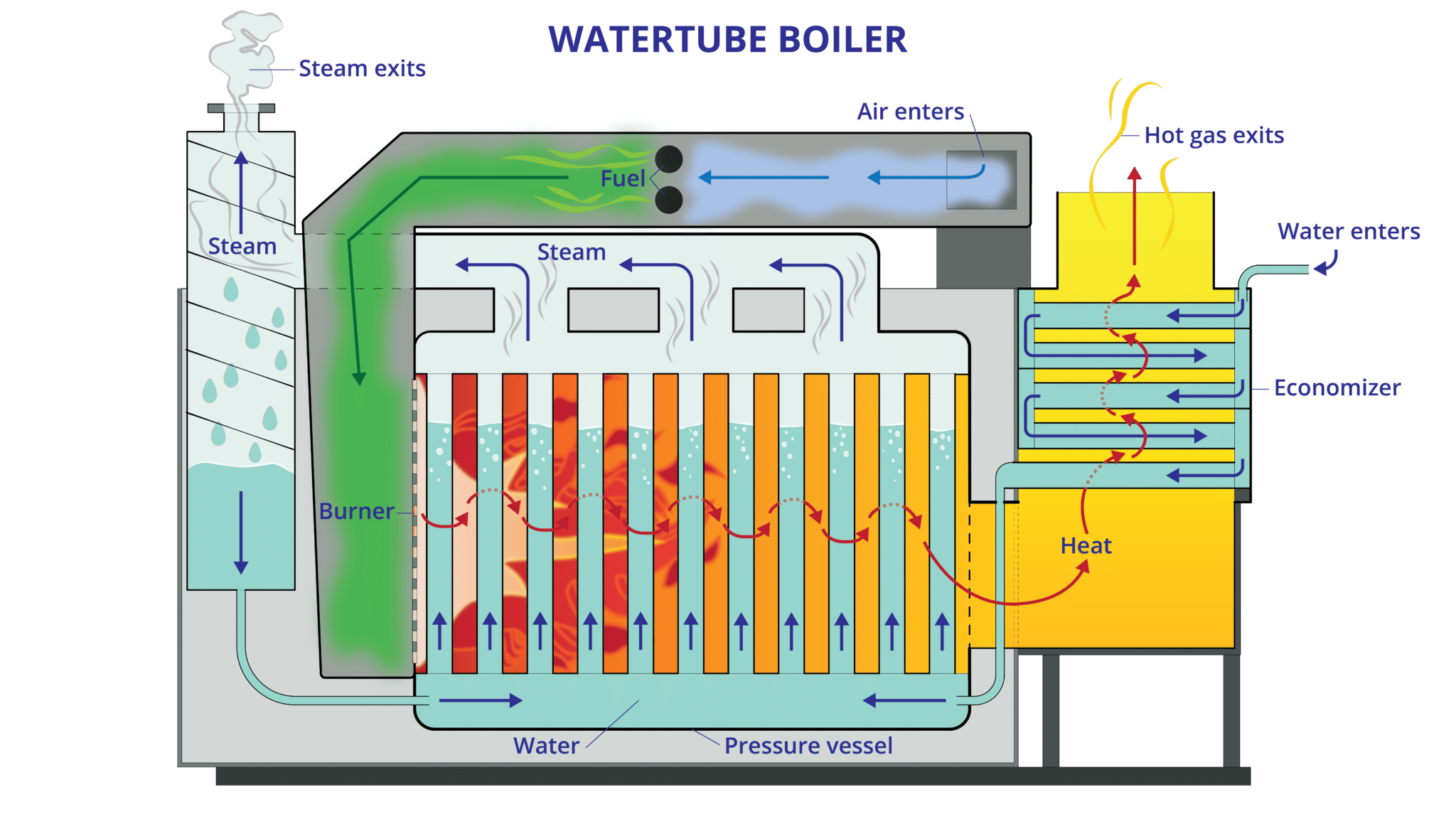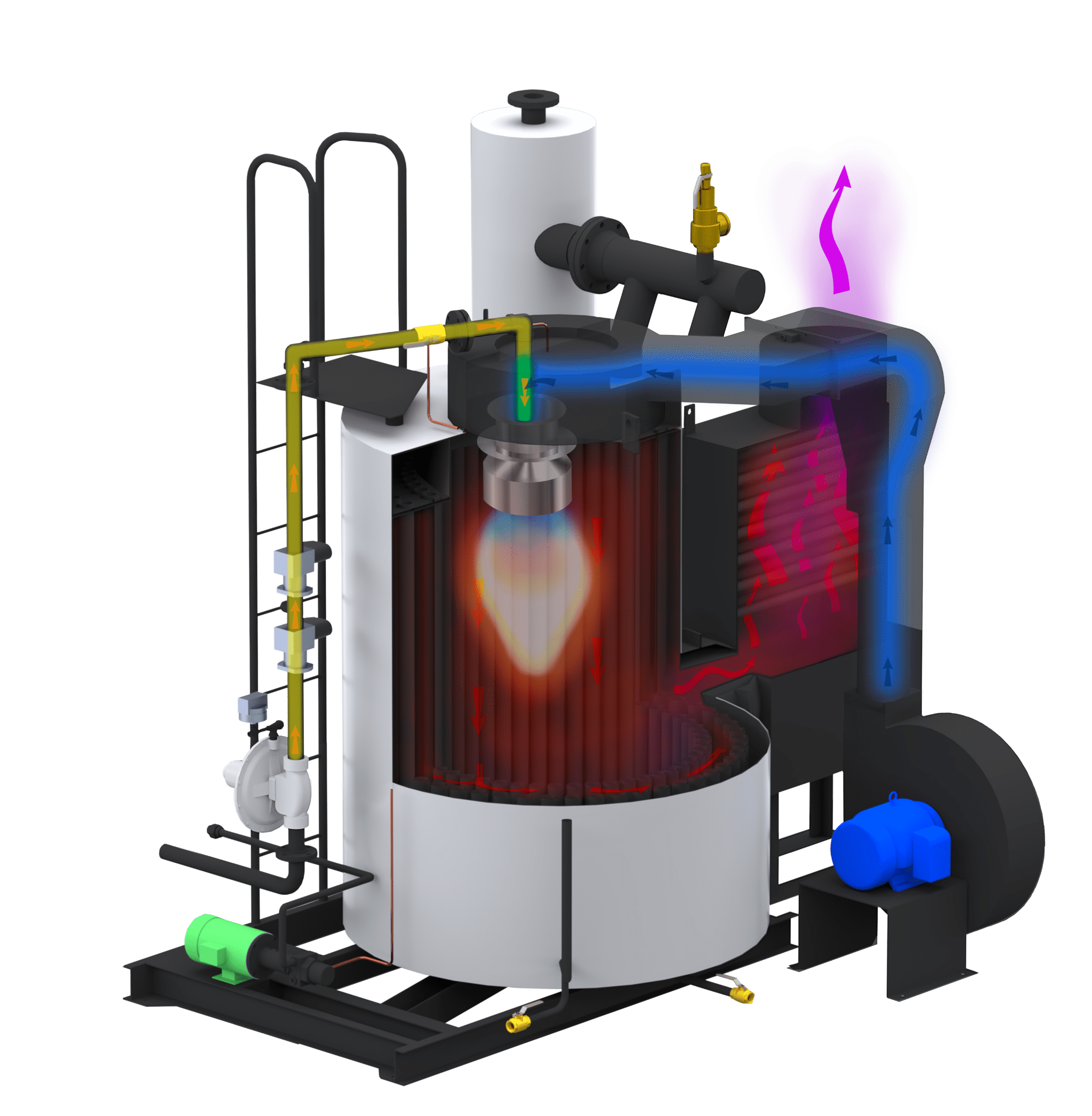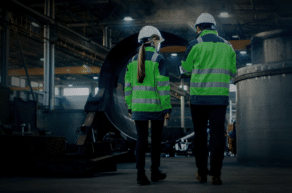Helping People and the Environment: Sustainable Steam Boilers in Hospitals
Businesses across the United States depend on heat energy for various commercial and industrial applications. Steam energy, for example, drives processes for numerous industries, including healthcare, but typically involves burning significant amounts of fossil fuel to produce steam, creating air pollutants.
While hospitals need steam for heating, humidification, and sterilization, they are also under increasing pressure to lower fossil fuel consumption and reduce their environmental impact. Fortunately, healthcare facilities like hospitals have modern-day options to produce steam more efficiently and sustainably, minimizing their long-term environmental impact and achieving their green energy goals.
Steam Production for Hospitals: An Environmental Challenge
To generate steam, many steam boilers burn non-renewable fossil fuels – such as coal, natural gas, propane, and #2 fuel oil. In addition to being finite resources, burning these materials at high temperatures produces several pollutants, including carbon monoxide, sulfur dioxide, and nitrogen oxides (NOx).
As these impurities are damaging to human health and the environment, they are carefully regulated. The Environmental Protection Agency’s (EPA) Clean Air Act of 1990 sets national and regional regulations to reduce emissions.
According to the American Hospital Association (AHA), fossil fuel emissions are “by far the largest source of emissions from hospitals, typically around 95%. Thus, if a health care facility reduces fossil fuel consumption, it significantly reduces its overall emissions.”
The AHA’s Sustainability Roadmap and the American Society for Health Care Engineering’s (ASHE) Energy to Care program provide helpful tools and resources to support hospitals’ response to climate change.
AHA encourages hospital management to determine their energy consumption and emissions baselines to measure future reductions and use Sustainability Roadmap tools to set long-term goals and strategies to drive change.
Producing Green Steam with Improved Steam Boiler Technology
The good news is that there are also vastly-improved technologies available to assist hospitals with improving efficiencies and producing “greener” steam. Modern steam boiler technology, for example, enables hospitals to use less fuel and produce fewer carbon emissions while still meeting fluctuating steam load demands.
Investing in Hospital Boilers with Low NOx and Low Carbon Emissions
The most direct way to reduce emissions is to ensure your steam boiler is rated low for CO2 and NOx emissions. These systems are certified to produce fewer harmful greenhouse gasses.
Efficiency is also a key metric. The more efficiently you produce steam, the better the overall environmental impact. Getting more useful energy from your fuel source ultimately means burning less fuel.
Miura’s EX-Series Dual Fuel Steam Boilers are Sustainable By Design
Miura’s industrial steam boilers have been designed to reduce the environmental impact. The EX dual-fuel industrial steam boiler range suits facilities like hospitals needing backup fuel whenever their primary source is unavailable.
Unlike traditional boilers, you can exchange the fuel in an EX boiler without a separate burner. The system uses natural gas, propane, or #2 fuel oil and can quickly change sources with less wastage than traditional boilers.
Miura Boiler’s Green Design Efficiencies
The Miura EX dual fuel series boasts several design features that reduce emissions and improve overall efficiencies.
1. A Once-Through Watertube Boiler Design for Quicker Startups
Miura’s EX-Series Dual Fuel boilers feature a once-through vertical boiler tube design that can produce steam from a cold start-up in under five minutes.
Traditional firetube boilers rely on heat passing from the burner flame through a series of horizontal fire tubes to heat surrounding water and generate steam. Heat loss is inevitable as heat travels further from the burner through the firetubes. To ensure that as much heat from the flame is absorbed into the water as possible, multiple fire tubes are evenly spaced in the pressure vessel and attached to a tube sheet to increase tube surface contact for effective heat transfer. Hot gases make multiple passes through these tubes, so the maximum heat transfer is gained through the tubes to the boiler water. Traditional boilers take much longer to produce steam than modern, low-water content steam technology as they have more water volume to heat up to reach the optimal boiler temperature.

On the other hand, Miura’s boilers include vertical water tubes within a compact pressure vessel, which are surrounded by flame. With each water tube’s surface area covered directly by flame, water can heat up quickly to produce steam with one pass through the water tubes.

These quick-startup boilers have excellent emissions ratings and help lower operating costs. In fact, Miura customers can save up to 20% on energy costs annually. That lowered fuel usage isn’t just cheaper to run – it’s greener, translating into a significant reduction in CO2 output, providing a more responsible use of natural resources.
2. Low Water Volume Design for Optimal Heat Transfer
One of the critical factors influencing boiler efficiency is how much heat is transferred into the water. The aim is minimal energy loss with the maximum amount of heat generated.
Miura boilers use a low water content design built to optimize heat transfer. In contrast to traditional boilers that contain a high volume of water, Miura’s system consists of a series of tubes within the pressure vessel with roughly 10% of the water in a traditional boiler.
Heating smaller volumes of water simultaneously means quicker steam production and increased efficiencies, as less heat is lost.
3. Flue Gas Recirculation for Lower Emissions
The Miura EXN-250-07, EXN-300-07, EXNH-300-07, and EXNH-250-07 all take advantage of flue gas recirculation (FGR) during gas combustion. A portion of the exhaust gas is mixed with fresh air to be reused during combustion. Recycling flue gas helps ensure optimum combustion and reduce emissions.
FGR only operates during gas combustion and not during oil combustion, so it won’t work if the boiler uses #2 fuel oil. It’s also only optional with an economizer, which preheats the feedwater using the exhaust.
4. Multiple Installation (MI) System for On-Demand Steam
A hospital’s steam demands will naturally vary throughout the day. Here’s where Miura’s modular boiler design shines. Conventional boilers often run 24 hours a day to meet a hospital’s steam and heat requirements, even when the steam required is relatively low.
By contrast, with Miura’s modular system, units that are not needed can be shut off or placed in standby mode, as each module can be quickly and efficiently restarted “on-demand” as steam demands increase. On-demand steam ultimately means reduced fuel combustion, leading to lowered emissions.
5. N+1 Redundancy
Hospital facilities must also account for emergency backups, including when a steam boiler is unexpectedly offline. This often involves investing in a large backup steam boiler – a massive capital outlay for a piece of equipment that may stand idle for most of its lifetime and a waste of boiler room space.
Miura’s modular boilers cater for N+1 redundancy, with no need to add another largescale boiler to your steam room infrastructure. Instead, you can add one additional modular boiler to diversify risk and save space.
Get High-Quality Steam With Miura
With cutting-edge features like their modular design, once-through watertube construction, and excellent EPA rating, Miura EX-Series boilers are a superb choice for hospitals needing a high-quality and reliable source of steam that meets the highest environmental standards.
By clicking here, you can see how Greenwich Hospital’s steam boiler system has benefited from our modular, dual-fuel EX boilers. Contact a Miura representative today to learn how to run a green and efficient steam plant at your hospital!




